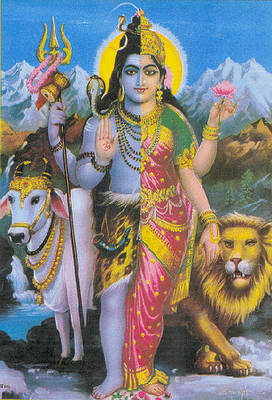In Namams 381 to 474, the Divine Mother’s Jnana Yoga worship
methods are discussed in details.
The Divine Mother is in manifested and un-manifested forms.
In this universe, there are manifested and un-manifested parts.
In the Sky, there are bright stars; in between them there are some elements not
fully manifested (avyakta) state; these elements can turn later into manifested
(vyakta) stars.
There are many universal beings in manifested and un-manifested
states which are all the forms of the Divine Mother. We cannot understand fully
the glories of the Divine Mother. Those manifested beings are too many to be
understood in this universe. To research on such beings devotionally, forms a
part of the worship of the Divine Mother. The Divine Mother is both in
manifested and un-manifested forms.
Mahatattva is different from avyakta which is better
understandable than avyakta itself. We cannot fully visualize the Mahatttvam also.
If the size is too big or too small, we cannot see or understand it completely.
For example, the Sky is too big which cannot be fully understood by humans for
the cause of such hugeness of the Sky. Ahankara and mahattvam are bigger than
the Sky. They are in vyakta and avyakta forms. Mahat and Ahankara are in
manifested and un-manifested, the Divine Mother’s forms.
The universe with its forms is in the Divine Mother’s manifested
state, while Her vital essence is in un-manifested state. For example, the tree
is the manifested state (vyakta) while the procreative power in its seed is the
un-manifested state (avyakta).
Whatever we perceive by our senses is Her manifested form, yet
Maya does not allow us to see Her correctly and completely. When someone
touches his own body and says “I”, he does not touch the real “I”. The real
entity is the un-manifested state of the soul.
Sri Shankara remembers his Guru at the start of Vivekacudamani:
“Salutation to absolute bliss, who can be perceived only through the essence of
Vedanta and who is beyond the normal means of perception”. The Guru who is both
manifested and un-manifested (vyaktavyakta) is remembered here.
Vyakta is perishable; avyakta is non perishable as stated in
Matsya Purana. Vyakta is the effect and avyakta is the cause. So the Divine
Mother is both cause and effect. Vyakta can be seen as individual; avyakta is
seen as collective or aggregate, as stated in Narasimha Purana. She is both in
individual and aggregate forms. Vyakta consists of seventy-three categories of
things (tattvas) and avyakta is the Supreme Prakrti or Nature as stated in
Brahma Purana. Thus the Divine Mother is in tattva and Prakrti forms.
There are three types of Shiva Lingas: Vyakta, avyakta and
vyaktavyakta forms. Svayambu or self-existing (Vyakta linga) worship is to seek
salvation; Banalinga or avyakta linga worship is for seeking worldly prosperity
and vyaktavyakta linga (Sailinga) worship is to seek both worldly happiness and
salvation. The Divine Mother is present in all three linga forms due Her unison
with Lord Shiva.
Vyakta for the Divine Mother is manifested to Her worshippers;
in avyakta form She never reveals Herself to those bound in samsara.
Looking differently, vyakta manifested in those whose actions
(karma) have ripened; avyakta un-manifested in those, whose karma or actions
are not ripe yet, still bound by Maya. Both are the Divine Mother’s alternate
forms. She is manifested in those whose sins are washed away and are pure; and un-manifested
in those who are still bound by their karma and impurities.
The Divine Mother, in Vyakta form in
unison with Lord Shiva
C N Nachiappun
Singapore, 27
February 2021.
References:
1.
The Thousand Names of the Divine Mother published in English by
Mata Amritanandamayi Center, San Ramon, California, USA, with Commentary by T.
V Narayana Menon
2.
Shri Lalitha Sahasranama Stostram published in Tamil by N.
Ramaswami Iyer charities’ societies, Trichirapalli, India, with Commentary by
C. V. Radhakrishna Sastry.
3.
The Lalitha Sahasranamam published in Tamil by Shri Ramakrishna
Thapovanam, Thiruipparaithurai, Trichy District, Tamilnadu, India with
commentary by Shrimath Swami Chithbavandar










